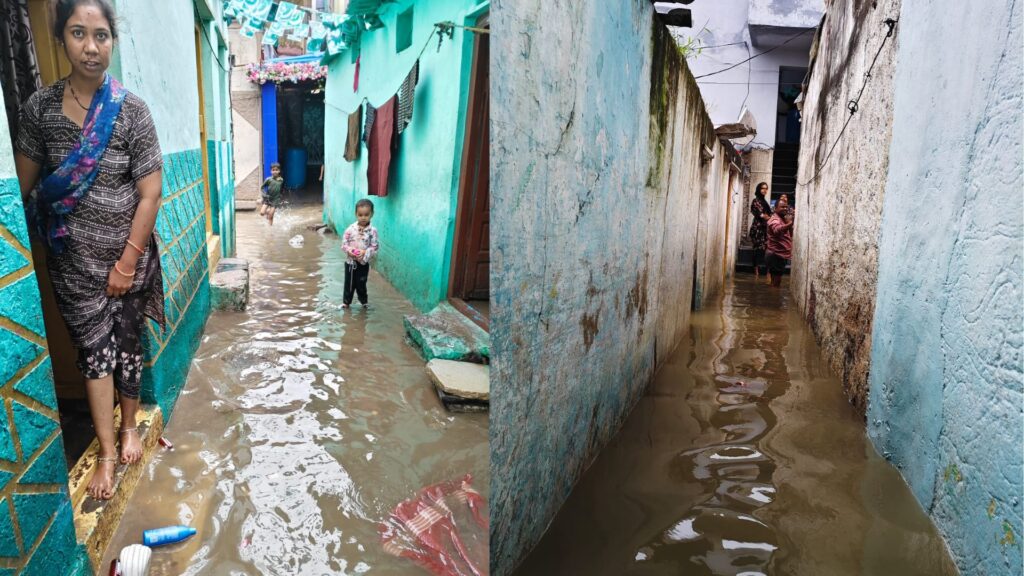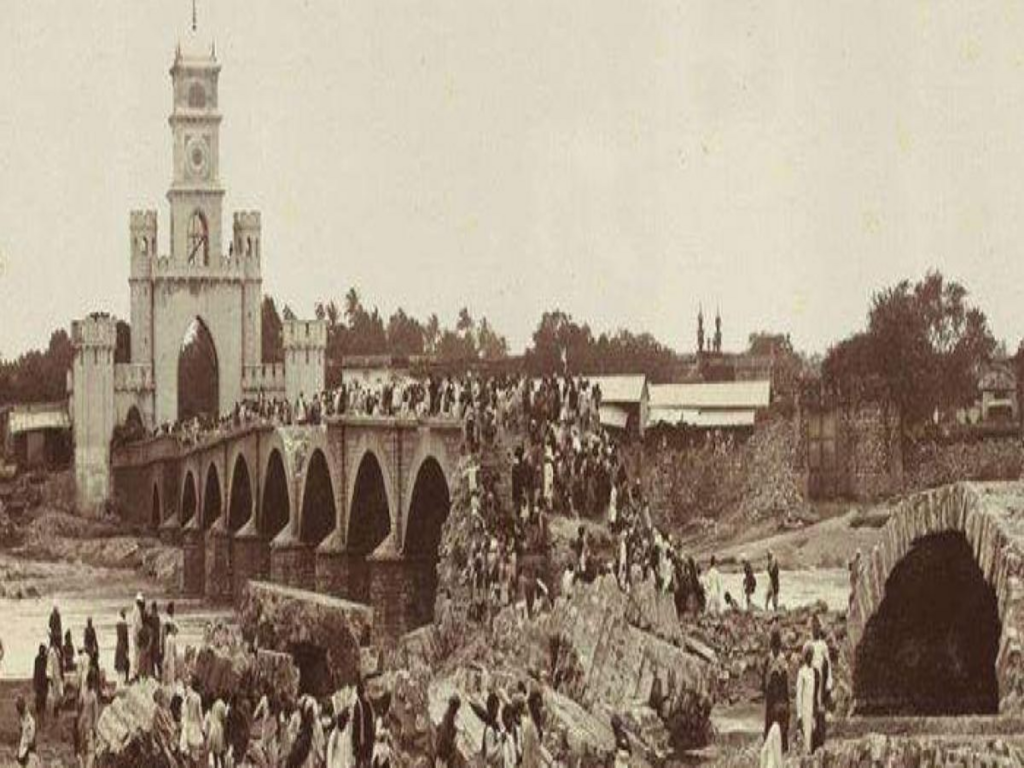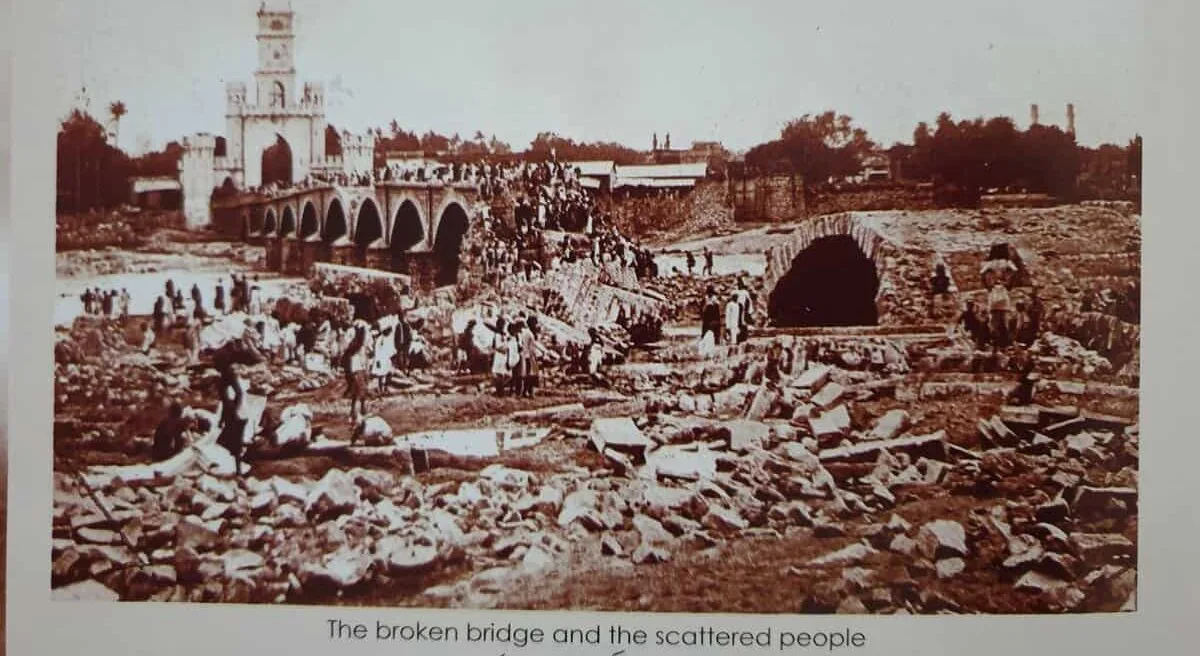Hyderabad: By this time in October, 1908, Hyderabad was devastated like never before in its recorded history. The mighty Musi river had overflown across the city a week earlier between September 28 and 29, claiming an unofficial estimate of about 15000 lives due to heavy floods.
The devastation to this day in Hyderabad’s history is unmatched and this year coincidentally parts of the city were once again flooded closer to the date of the 1908 Musi river floods. Ironically, the two dams built by the last Nizam of Hyderabad to save the city from the Musi’s wrath – Osman Sagar and Himayath Sagar – have today become a curse for people who built their homes on the river’s banks over decades as the river was held back outside the city.
The last week of September once against saw hundreds of people living in areas like Osman Nagar on the banks of the Musi river leaving their homes to seek shelter as gates of Osman Sagar and Himayath Sagar had been opened to release excess water due to heavy rains. Many residents that said they had not even been informed, unlike usually, when they gates of the two dams were being opened.
What is ironic is the last Nizam of Hyderabad, Mir Osman Ali Khan (1911-48) built the Osman and Himayath dams to stop the Musi river’s water from entering and flooding the city during heavy rains. It worked. However, in the decades that followed, the river itself in Hyderabad had run dry and its flow was disrupted due to the dams.

It led to several people eventually squating on the riverbeds and eventually permanently settling on the Musi river’s banks in Hyderabad. Interestingly, during last week’s floods many residents claimed that the civic authorities did not inform them before releasing water from the Osman Sagar and Himayath Sagar dams.
“The government’s Musi river plan is a real estate project. It will take away lands from the poor and give it to corporates. The BRS also did the same by selling government lands to make money that it used to spend on social welfare. Current chief minister Revanth Reddy is intent in removing people from the riverbeds. The BRS’ claim that they released water without informing residents may actually be true,” said activist SQ Masood, who lives in the Old City of Hyderabad.
In the past year, the Telangana government has reiterated that it will take up the beautification of the Musi riverbank, a project that state governments have been talking of from at least a decade and a half. As the river ran dry in Hyderabad after the Osman and Himayath Sagar were built, the Musi was pretty much turned into a swamp as it was also turned into sewage by successvive governments.
That led to it becoming an eyesore and undesirable, due to which past governments tried to beautify it. Crores of rupees were also spent but with absolutely no result whatsoever. It was only when the Congress government here began relocating families to other state built housing societies for the beautification project is when it became evident that this time change seems imminent.
However, even if the state clears up residential colonies, it is uncertain if the Musi river will once again flow as he state plans to redevelop the riverbanks. Activists like Masood fear that in the place of residents, the land parcel of the riverbank will be given or sold to corporates instead. “It is a very simple thing. If they want the Musi to flow again, they just have to let water from dams downstream. It will slowly clear away the sewage as well over years,” said another activist who did not want to be named.
Lessons from 1908 – the flood and Hyderabad’s modernisation
The floods in 1908 took place during the reign of Mahbub Ali Pasha, the sixth Nizam of Hyderabad. It’s devastation was unseen before and it made the seventh and last Nizam Osman Ali Khan entirely transform the city in his efforts to flood proof the city to avoid another calamity.
The massive destruction was the result of water tanks or beds that lay on the northern and southern banks of the Musi river getting breached. There were 788 tanks in a basin of 860 square miles of the Musi River, roughly at the rate of one tank for every square mile of the catchment (as mentioned in the legendary engineer M. Visweswaraya’s autobiography).

From the total 788 tanks abounding the Musi river, 221 were breached, which resulted in Hyderabad getting flooded. Images from September 1908 show devastating pictures of broken homes, a damaged Afzal Gunj bridge, and also a flooded British Residency (now Koti Women’s College) gate. The last Nizam’s government set up the City Improvement Board (CIB) in 1912, under which Osman Ali Khan built a slew of public institutions to modernise Hyderabad.
In about 30 years after 1912, landmark public infrastructure buildings which are still in use today, like the High Court (1919), Govt. City College, Osmania General Hospital, Unani Hospital (1929), etc., came up. The CIB also redeveloped Hyderabad’s slums to decongest them. It also built housing for the poor, spending about Rs. 30 lakh in building 2,500 houses in 12 localities. The Musi river had also been beautified, and it functioned in a way where it did not flood Hyderabad.
The houses were classified under A, B, C, and D classes (each differing in size and amenities). With sanitation and hygiene given most importance, the newly-constructed homes were given to occupants on a hire-purchase system over 15 years. For government homes designed about a century ago, those were designed with toilets, verandas and kitchens as well.
Over Rs 50 lakh spent on Hyderabad
The erstwhile state of Hyderabad (16 districts; 8 in Telangana, 5 in Maharashtra and 3 in Karnataka) made most of its income through revenues from farming taxes and levies from rural areas which were quite backward. While the Nizam rebuilt and modernised Hyderabad, the Telangana area, run (mostly Telugu dominant caste Hindus) by Jagirdars or landlords, was severely underdeveloped.
In total, Rs.50, 85,200 was spent to develop the city. Of that, Rs.14, 36,565 was used for slum clearance, improving traffic roads, constructing drains, and other works.







